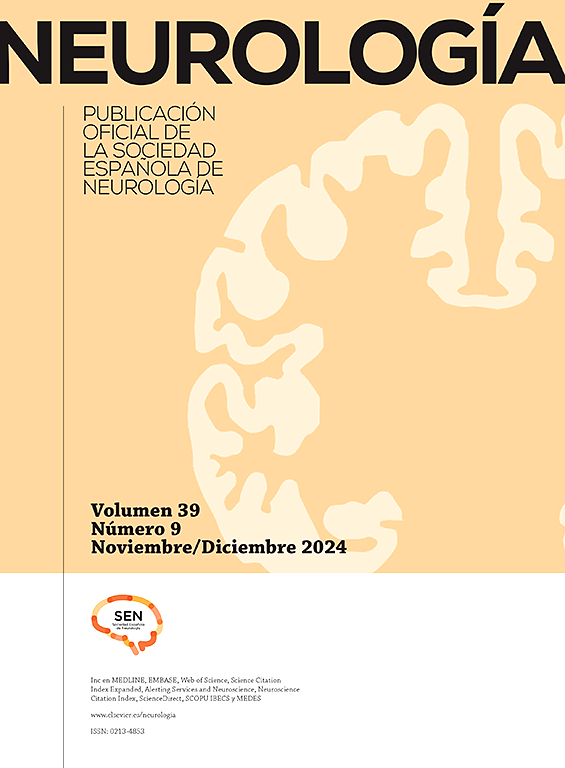16 项神经心理测试在六个不同时间点的可靠变化指数
IF 2.9
4区 医学
Q2 CLINICAL NEUROLOGY
引用次数: 0
摘要
神经心理学评估通常包括重复测试,以评估认知变化或对患者进行纵向随访研究。为了评估评估之间的变化是否相关,需要纵向参考数据。本研究的目的是提供参考数据,以解释16个常用测试在连续评估之间的六个不同时间间隔,使用五个可靠的变化指数之间的评分变化。该研究是Normacog项目的一部分,该项目在西班牙招募了388名健康参与者(18-84岁),分两次进行评估。进行基线评估,然后随访1个月(n = 67)、3个月(n = 64)、6个月(n = 59)、9个月(n = 60)、12个月(n = 68)或24个月(n = 70)。对纵向数据进行分析,计算出可靠的变化指数。结果两组在各时间点的评分均有显著改善,尤其是在记忆相关变量方面。参考数据采用以下指标:以百分位数表示的差异评分、标准差指数(SDI)、可靠变化指数(RCI)、RCI +实践效果(RCI + PE)和基于标准化回归的公式。结论本研究为分析认知改变是否可靠提供了数据。结果支持使用这些可靠的变化指数来避免与连续评估相关的偏差。本研究将为这些工具在临床实践中的应用奠定基础,并为建立可靠的变化指标提供参考。本文章由计算机程序翻译,如有差异,请以英文原文为准。
Reliable change indices for 16 neuropsychological tests at six different time points
Introduction
Neuropsychological assessment often involves repeated testing in order to assess a cognitive change or conduct a longitudinal follow-up study of a patient. To assess whether the change between assessments is relevant or not, longitudinal reference data are needed. The aim of this study is to provide reference data to enable interpretation of score changes between assessments for 16 commonly used tests, at six different time intervals between successive assessments, using five reliable change indices.
Methods
The study is part of the Normacog project, in which 388 healthy participants recruited in Spain (aged 18–84 years) were assessed on two occasions. A baseline assessment was carried out, and then followed up at 1 month (n = 67), 3 months (n = 64), 6 months (n = 59), 9 months (n = 60), 12 months (n = 68), or 24 months (n = 70). Longitudinal data were analyzed, and reliable change indices were calculated.
Results
A significant improvement was observed between assessment scores for all time points, especially in memory-related variables. Reference data are provided using the following indices: discrepancy scores expressed in percentiles, standard deviation index (SDI), reliable change index (RCI), RCI + practice effect (RCI + PE), and standardized regression-based formulae.
Conclusions
This study provides data to analyze whether or not a cognitive change can be considered reliable. The results support the use of these reliable change indices to avoid biases related to successive assessments. This study will lay the foundations for the implementation of these tools in clinical practice, and will be a reference for the creation of reliable change indices.
求助全文
通过发布文献求助,成功后即可免费获取论文全文。
去求助
来源期刊

Neurologia
医学-临床神经学
CiteScore
5.90
自引率
2.60%
发文量
135
审稿时长
48 days
期刊介绍:
Neurología es la revista oficial de la Sociedad Española de Neurología y publica, desde 1986 contribuciones científicas en el campo de la neurología clínica y experimental. Los contenidos de Neurología abarcan desde la neuroepidemiología, la clínica neurológica, la gestión y asistencia neurológica y la terapéutica, a la investigación básica en neurociencias aplicada a la neurología. Las áreas temáticas de la revistas incluyen la neurologia infantil, la neuropsicología, la neurorehabilitación y la neurogeriatría. Los artículos publicados en Neurología siguen un proceso de revisión por doble ciego a fin de que los trabajos sean seleccionados atendiendo a su calidad, originalidad e interés y así estén sometidos a un proceso de mejora. El formato de artículos incluye Editoriales, Originales, Revisiones y Cartas al Editor, Neurología es el vehículo de información científica de reconocida calidad en profesionales interesados en la neurología que utilizan el español, como demuestra su inclusión en los más prestigiosos y selectivos índices bibliográficos del mundo.
 求助内容:
求助内容: 应助结果提醒方式:
应助结果提醒方式:


